

Materials:-
There are many different materials that can be used to design a spring, including:
- Steel: Steel is the most common material used to make springs. It is strong, durable, and has good fatigue resistance.
- Stainless steel: Stainless steel is a type of steel that is resistant to corrosion and is often used in applications where the spring will be exposed to harsh environments.
- Brass: Brass is a soft, malleable metal that is often used to make springs that will be subjected to high loads or that will be used in corrosive environments.
- Copper: Copper is a soft, malleable metal that is often used to make springs for use in electrical applications.
- Bronze: Bronze is a strong, corrosion-resistant metal that is often used in springs for marine and other outdoor applications.
- Aluminum: Aluminum is a lightweight metal that is often used in springs for applications where weight is a concern.
- Carbon: Carbon-based materials, such as carbon steel or carbon composites, can be used to make springs that have increased fatigue resistance and the ability to operate at high temperatures.
Production:-
There are several different methods that can be used to manufacture springs, including:
- Coiling: Coiling is a common method of producing springs. It involves using a machine to wind wire into a spiral shape.
- Stamping: Stamping is a process in which a spring is cut and shaped from a flat sheet of metal using a die and press.
- Wire forming: Wire forming is a process in which a wire is shaped into a spring using a variety of tools and machines.
- Extrusion: Extrusion is a process in which a spring is formed by pushing a material through a shaped die.
- Forging: Forging is a process in which a spring is shaped by hammering or pressing it into a desired shape.


Materials:-
There are many different materials that can be used to design a spring, including:
- Steel: Steel is the most common material used to make springs. It is strong, durable, and has good fatigue resistance.
- Stainless steel: Stainless steel is a type of steel that is resistant to corrosion and is often used in applications where the spring will be exposed to harsh environments.
- Brass: Brass is a soft, malleable metal that is often used to make springs that will be subjected to high loads or that will be used in corrosive environments.
- Copper: Copper is a soft, malleable metal that is often used to make springs for use in electrical applications.
- Bronze: Bronze is a strong, corrosion-resistant metal that is often used in springs for marine and other outdoor applications.
- Aluminum: Aluminum is a lightweight metal that is often used in springs for applications where weight is a concern.
- Carbon: Carbon-based materials, such as carbon steel or carbon composites, can be used to make springs that have increased fatigue resistance and the ability to operate at high temperatures.
Production:-
There are several different methods that can be used to manufacture springs, including:
- Coiling: Coiling is a common method of producing springs. It involves using a machine to wind wire into a spiral shape.
- Stamping: Stamping is a process in which a spring is cut and shaped from a flat sheet of metal using a die and press.
- Wire forming: Wire forming is a process in which a wire is shaped into a spring using a variety of tools and machines.
- Extrusion: Extrusion is a process in which a spring is formed by pushing a material through a shaped die.
- Forging: Forging is a process in which a spring is shaped by hammering or pressing it into a desired shape.


Materials:-
There are many different materials that can be used to design a spring, including:
- Steel: Steel is the most common material used to make springs. It is strong, durable, and has good fatigue resistance.
- Stainless steel: Stainless steel is a type of steel that is resistant to corrosion and is often used in applications where the spring will be exposed to harsh environments.
- Brass: Brass is a soft, malleable metal that is often used to make springs that will be subjected to high loads or that will be used in corrosive environments.
- Copper: Copper is a soft, malleable metal that is often used to make springs for use in electrical applications.
- Bronze: Bronze is a strong, corrosion-resistant metal that is often used in springs for marine and other outdoor applications.
- Aluminum: Aluminum is a lightweight metal that is often used in springs for applications where weight is a concern.
- Carbon: Carbon-based materials, such as carbon steel or carbon composites, can be used to make springs that have increased fatigue resistance and the ability to operate at high temperatures.
Production:-
There are several different methods that can be used to manufacture springs, including:
- Coiling: Coiling is a common method of producing springs. It involves using a machine to wind wire into a spiral shape.
- Stamping: Stamping is a process in which a spring is cut and shaped from a flat sheet of metal using a die and press.
- Wire forming: Wire forming is a process in which a wire is shaped into a spring using a variety of tools and machines.
- Extrusion: Extrusion is a process in which a spring is formed by pushing a material through a shaped die.
- Forging: Forging is a process in which a spring is shaped by hammering or pressing it into a desired shape.
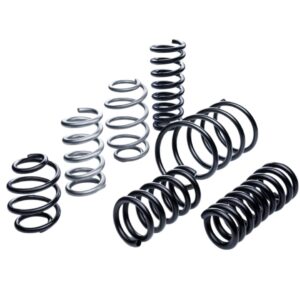
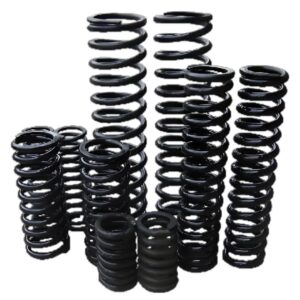
Materials:-
There are many different materials that can be used to design a spring, including:
- Steel: Steel is the most common material used to make springs. It is strong, durable, and has good fatigue resistance.
- Stainless steel: Stainless steel is a type of steel that is resistant to corrosion and is often used in applications where the spring will be exposed to harsh environments.
- Brass: Brass is a soft, malleable metal that is often used to make springs that will be subjected to high loads or that will be used in corrosive environments.
- Copper: Copper is a soft, malleable metal that is often used to make springs for use in electrical applications.
- Bronze: Bronze is a strong, corrosion-resistant metal that is often used in springs for marine and other outdoor applications.
- Aluminum: Aluminum is a lightweight metal that is often used in springs for applications where weight is a concern.
- Carbon: Carbon-based materials, such as carbon steel or carbon composites, can be used to make springs that have increased fatigue resistance and the ability to operate at high temperatures.
Production:-
There are several different methods that can be used to manufacture springs, including:
- Coiling: Coiling is a common method of producing springs. It involves using a machine to wind wire into a spiral shape.
- Stamping: Stamping is a process in which a spring is cut and shaped from a flat sheet of metal using a die and press.
- Wire forming: Wire forming is a process in which a wire is shaped into a spring using a variety of tools and machines.
- Extrusion: Extrusion is a process in which a spring is formed by pushing a material through a shaped die.
- Forging: Forging is a process in which a spring is shaped by hammering or pressing it into a desired shape.
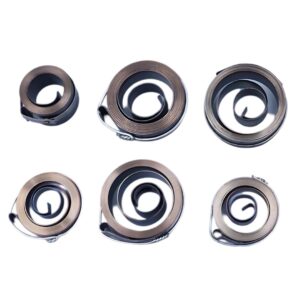
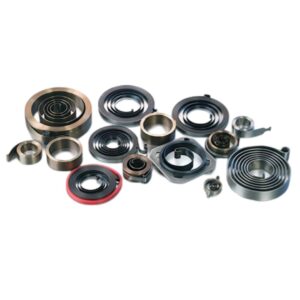
Materials:-
There are many different materials that can be used to design a spring, including:
- Steel: Steel is the most common material used to make springs. It is strong, durable, and has good fatigue resistance.
- Stainless steel: Stainless steel is a type of steel that is resistant to corrosion and is often used in applications where the spring will be exposed to harsh environments.
- Brass: Brass is a soft, malleable metal that is often used to make springs that will be subjected to high loads or that will be used in corrosive environments.
- Copper: Copper is a soft, malleable metal that is often used to make springs for use in electrical applications.
- Bronze: Bronze is a strong, corrosion-resistant metal that is often used in springs for marine and other outdoor applications.
- Aluminum: Aluminum is a lightweight metal that is often used in springs for applications where weight is a concern.
- Carbon: Carbon-based materials, such as carbon steel or carbon composites, can be used to make springs that have increased fatigue resistance and the ability to operate at high temperatures.
Production:-
There are several different methods that can be used to manufacture springs, including:
- Coiling: Coiling is a common method of producing springs. It involves using a machine to wind wire into a spiral shape.
- Stamping: Stamping is a process in which a spring is cut and shaped from a flat sheet of metal using a die and press.
- Wire forming: Wire forming is a process in which a wire is shaped into a spring using a variety of tools and machines.
- Extrusion: Extrusion is a process in which a spring is formed by pushing a material through a shaped die.
- Forging: Forging is a process in which a spring is shaped by hammering or pressing it into a desired shape.
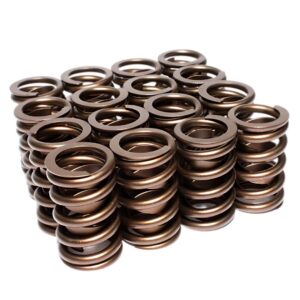
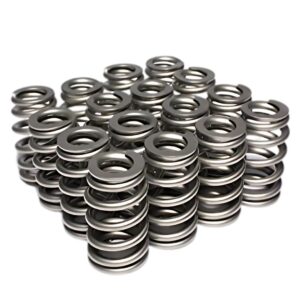
Materials:-
There are many different materials that can be used to design a spring, including:
- Steel: Steel is the most common material used to make springs. It is strong, durable, and has good fatigue resistance.
- Stainless steel: Stainless steel is a type of steel that is resistant to corrosion and is often used in applications where the spring will be exposed to harsh environments.
- Brass: Brass is a soft, malleable metal that is often used to make springs that will be subjected to high loads or that will be used in corrosive environments.
- Copper: Copper is a soft, malleable metal that is often used to make springs for use in electrical applications.
- Bronze: Bronze is a strong, corrosion-resistant metal that is often used in springs for marine and other outdoor applications.
- Aluminum: Aluminum is a lightweight metal that is often used in springs for applications where weight is a concern.
- Carbon: Carbon-based materials, such as carbon steel or carbon composites, can be used to make springs that have increased fatigue resistance and the ability to operate at high temperatures.
Production:-
There are several different methods that can be used to manufacture springs, including:
- Coiling: Coiling is a common method of producing springs. It involves using a machine to wind wire into a spiral shape.
- Stamping: Stamping is a process in which a spring is cut and shaped from a flat sheet of metal using a die and press.
- Wire forming: Wire forming is a process in which a wire is shaped into a spring using a variety of tools and machines.
- Extrusion: Extrusion is a process in which a spring is formed by pushing a material through a shaped die.
- Forging: Forging is a process in which a spring is shaped by hammering or pressing it into a desired shape.
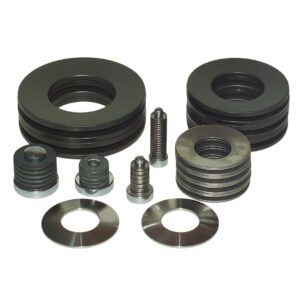
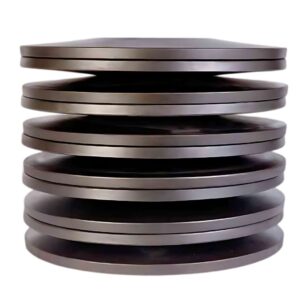
Materials:-
There are many different materials that can be used to design a spring, including:
- Steel: Steel is the most common material used to make springs. It is strong, durable, and has good fatigue resistance.
- Stainless steel: Stainless steel is a type of steel that is resistant to corrosion and is often used in applications where the spring will be exposed to harsh environments.
- Brass: Brass is a soft, malleable metal that is often used to make springs that will be subjected to high loads or that will be used in corrosive environments.
- Copper: Copper is a soft, malleable metal that is often used to make springs for use in electrical applications.
- Bronze: Bronze is a strong, corrosion-resistant metal that is often used in springs for marine and other outdoor applications.
- Aluminum: Aluminum is a lightweight metal that is often used in springs for applications where weight is a concern.
- Carbon: Carbon-based materials, such as carbon steel or carbon composites, can be used to make springs that have increased fatigue resistance and the ability to operate at high temperatures.
Production:-
There are several different methods that can be used to manufacture springs, including:
- Coiling: Coiling is a common method of producing springs. It involves using a machine to wind wire into a spiral shape.
- Stamping: Stamping is a process in which a spring is cut and shaped from a flat sheet of metal using a die and press.
- Wire forming: Wire forming is a process in which a wire is shaped into a spring using a variety of tools and machines.
- Extrusion: Extrusion is a process in which a spring is formed by pushing a material through a shaped die.
- Forging: Forging is a process in which a spring is shaped by hammering or pressing it into a desired shape.
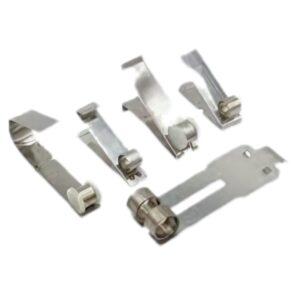

Materials:-
There are many different materials that can be used to design a spring, including:
- Steel: Steel is the most common material used to make springs. It is strong, durable, and has good fatigue resistance.
- Stainless steel: Stainless steel is a type of steel that is resistant to corrosion and is often used in applications where the spring will be exposed to harsh environments.
- Brass: Brass is a soft, malleable metal that is often used to make springs that will be subjected to high loads or that will be used in corrosive environments.
- Copper: Copper is a soft, malleable metal that is often used to make springs for use in electrical applications.
- Bronze: Bronze is a strong, corrosion-resistant metal that is often used in springs for marine and other outdoor applications.
- Aluminum: Aluminum is a lightweight metal that is often used in springs for applications where weight is a concern.
- Carbon: Carbon-based materials, such as carbon steel or carbon composites, can be used to make springs that have increased fatigue resistance and the ability to operate at high temperatures.
Production:-
There are several different methods that can be used to manufacture springs, including:
- Coiling: Coiling is a common method of producing springs. It involves using a machine to wind wire into a spiral shape.
- Stamping: Stamping is a process in which a spring is cut and shaped from a flat sheet of metal using a die and press.
- Wire forming: Wire forming is a process in which a wire is shaped into a spring using a variety of tools and machines.
- Extrusion: Extrusion is a process in which a spring is formed by pushing a material through a shaped die.
- Forging: Forging is a process in which a spring is shaped by hammering or pressing it into a desired shape.
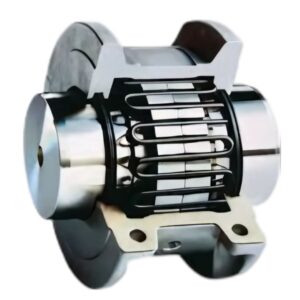
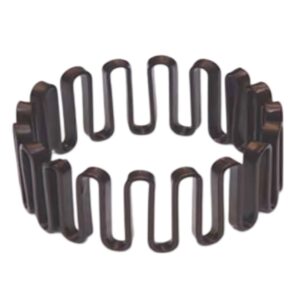
Materials:-
There are many different materials that can be used to design a spring, including:
- Steel: Steel is the most common material used to make springs. It is strong, durable, and has good fatigue resistance.
- Stainless steel: Stainless steel is a type of steel that is resistant to corrosion and is often used in applications where the spring will be exposed to harsh environments.
- Brass: Brass is a soft, malleable metal that is often used to make springs that will be subjected to high loads or that will be used in corrosive environments.
- Copper: Copper is a soft, malleable metal that is often used to make springs for use in electrical applications.
- Bronze: Bronze is a strong, corrosion-resistant metal that is often used in springs for marine and other outdoor applications.
- Aluminum: Aluminum is a lightweight metal that is often used in springs for applications where weight is a concern.
- Carbon: Carbon-based materials, such as carbon steel or carbon composites, can be used to make springs that have increased fatigue resistance and the ability to operate at high temperatures.
Production:-
There are several different methods that can be used to manufacture springs, including:
- Coiling: Coiling is a common method of producing springs. It involves using a machine to wind wire into a spiral shape.
- Stamping: Stamping is a process in which a spring is cut and shaped from a flat sheet of metal using a die and press.
- Wire forming: Wire forming is a process in which a wire is shaped into a spring using a variety of tools and machines.
- Extrusion: Extrusion is a process in which a spring is formed by pushing a material through a shaped die.
- Forging: Forging is a process in which a spring is shaped by hammering or pressing it into a desired shape.

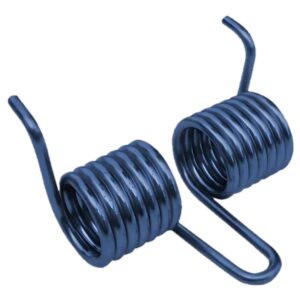
Materials:-
There are many different materials that can be used to design a spring, including:
- Steel: Steel is the most common material used to make springs. It is strong, durable, and has good fatigue resistance.
- Stainless steel: Stainless steel is a type of steel that is resistant to corrosion and is often used in applications where the spring will be exposed to harsh environments.
- Brass: Brass is a soft, malleable metal that is often used to make springs that will be subjected to high loads or that will be used in corrosive environments.
- Copper: Copper is a soft, malleable metal that is often used to make springs for use in electrical applications.
- Bronze: Bronze is a strong, corrosion-resistant metal that is often used in springs for marine and other outdoor applications.
- Aluminum: Aluminum is a lightweight metal that is often used in springs for applications where weight is a concern.
- Carbon: Carbon-based materials, such as carbon steel or carbon composites, can be used to make springs that have increased fatigue resistance and the ability to operate at high temperatures.
Production:-
There are several different methods that can be used to manufacture springs, including:
- Coiling: Coiling is a common method of producing springs. It involves using a machine to wind wire into a spiral shape.
- Stamping: Stamping is a process in which a spring is cut and shaped from a flat sheet of metal using a die and press.
- Wire forming: Wire forming is a process in which a wire is shaped into a spring using a variety of tools and machines.
- Extrusion: Extrusion is a process in which a spring is formed by pushing a material through a shaped die.
- Forging: Forging is a process in which a spring is shaped by hammering or pressing it into a desired shape.
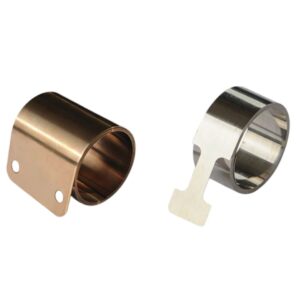
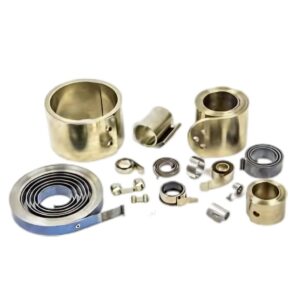
Materials:-
There are many different materials that can be used to design a spring, including:
- Steel: Steel is the most common material used to make springs. It is strong, durable, and has good fatigue resistance.
- Stainless steel: Stainless steel is a type of steel that is resistant to corrosion and is often used in applications where the spring will be exposed to harsh environments.
- Brass: Brass is a soft, malleable metal that is often used to make springs that will be subjected to high loads or that will be used in corrosive environments.
- Copper: Copper is a soft, malleable metal that is often used to make springs for use in electrical applications.
- Bronze: Bronze is a strong, corrosion-resistant metal that is often used in springs for marine and other outdoor applications.
- Aluminum: Aluminum is a lightweight metal that is often used in springs for applications where weight is a concern.
- Carbon: Carbon-based materials, such as carbon steel or carbon composites, can be used to make springs that have increased fatigue resistance and the ability to operate at high temperatures.
Production:-
There are several different methods that can be used to manufacture springs, including:
- Coiling: Coiling is a common method of producing springs. It involves using a machine to wind wire into a spiral shape.
- Stamping: Stamping is a process in which a spring is cut and shaped from a flat sheet of metal using a die and press.
- Wire forming: Wire forming is a process in which a wire is shaped into a spring using a variety of tools and machines.
- Extrusion: Extrusion is a process in which a spring is formed by pushing a material through a shaped die.
- Forging: Forging is a process in which a spring is shaped by hammering or pressing it into a desired shape.


Materials:-
There are many different materials that can be used to design a spring, including:
- Steel: Steel is the most common material used to make springs. It is strong, durable, and has good fatigue resistance.
- Stainless steel: Stainless steel is a type of steel that is resistant to corrosion and is often used in applications where the spring will be exposed to harsh environments.
- Brass: Brass is a soft, malleable metal that is often used to make springs that will be subjected to high loads or that will be used in corrosive environments.
- Copper: Copper is a soft, malleable metal that is often used to make springs for use in electrical applications.
- Bronze: Bronze is a strong, corrosion-resistant metal that is often used in springs for marine and other outdoor applications.
- Aluminum: Aluminum is a lightweight metal that is often used in springs for applications where weight is a concern.
- Carbon: Carbon-based materials, such as carbon steel or carbon composites, can be used to make springs that have increased fatigue resistance and the ability to operate at high temperatures.
Production:-
There are several different methods that can be used to manufacture springs, including:
- Coiling: Coiling is a common method of producing springs. It involves using a machine to wind wire into a spiral shape.
- Stamping: Stamping is a process in which a spring is cut and shaped from a flat sheet of metal using a die and press.
- Wire forming: Wire forming is a process in which a wire is shaped into a spring using a variety of tools and machines.
- Extrusion: Extrusion is a process in which a spring is formed by pushing a material through a shaped die.
- Forging: Forging is a process in which a spring is shaped by hammering or pressing it into a desired shape.
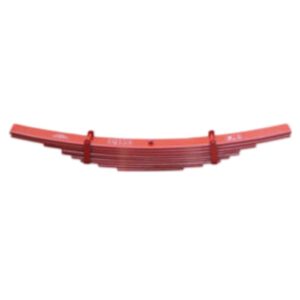
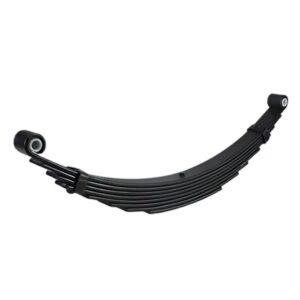
Materials:-
There are many different materials that can be used to design a spring, including:
- Steel: Steel is the most common material used to make springs. It is strong, durable, and has good fatigue resistance.
- Stainless steel: Stainless steel is a type of steel that is resistant to corrosion and is often used in applications where the spring will be exposed to harsh environments.
- Brass: Brass is a soft, malleable metal that is often used to make springs that will be subjected to high loads or that will be used in corrosive environments.
- Copper: Copper is a soft, malleable metal that is often used to make springs for use in electrical applications.
- Bronze: Bronze is a strong, corrosion-resistant metal that is often used in springs for marine and other outdoor applications.
- Aluminum: Aluminum is a lightweight metal that is often used in springs for applications where weight is a concern.
- Carbon: Carbon-based materials, such as carbon steel or carbon composites, can be used to make springs that have increased fatigue resistance and the ability to operate at high temperatures.
Production:-
There are several different methods that can be used to manufacture springs, including:
- Coiling: Coiling is a common method of producing springs. It involves using a machine to wind wire into a spiral shape.
- Stamping: Stamping is a process in which a spring is cut and shaped from a flat sheet of metal using a die and press.
- Wire forming: Wire forming is a process in which a wire is shaped into a spring using a variety of tools and machines.
- Extrusion: Extrusion is a process in which a spring is formed by pushing a material through a shaped die.
- Forging: Forging is a process in which a spring is shaped by hammering or pressing it into a desired shape.
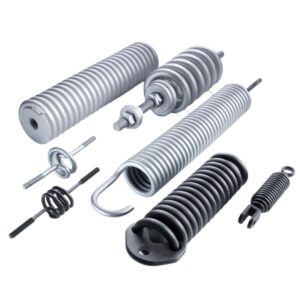
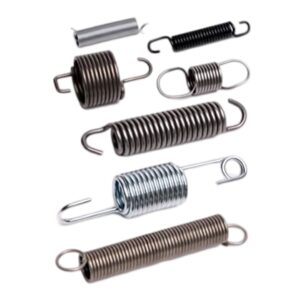
Materials:-
There are many different materials that can be used to design a spring, including:
- Steel: Steel is the most common material used to make springs. It is strong, durable, and has good fatigue resistance.
- Stainless steel: Stainless steel is a type of steel that is resistant to corrosion and is often used in applications where the spring will be exposed to harsh environments.
- Brass: Brass is a soft, malleable metal that is often used to make springs that will be subjected to high loads or that will be used in corrosive environments.
- Copper: Copper is a soft, malleable metal that is often used to make springs for use in electrical applications.
- Bronze: Bronze is a strong, corrosion-resistant metal that is often used in springs for marine and other outdoor applications.
- Aluminum: Aluminum is a lightweight metal that is often used in springs for applications where weight is a concern.
- Carbon: Carbon-based materials, such as carbon steel or carbon composites, can be used to make springs that have increased fatigue resistance and the ability to operate at high temperatures.
Production:-
There are several different methods that can be used to manufacture springs, including:
- Coiling: Coiling is a common method of producing springs. It involves using a machine to wind wire into a spiral shape.
- Stamping: Stamping is a process in which a spring is cut and shaped from a flat sheet of metal using a die and press.
- Wire forming: Wire forming is a process in which a wire is shaped into a spring using a variety of tools and machines.
- Extrusion: Extrusion is a process in which a spring is formed by pushing a material through a shaped die.
- Forging: Forging is a process in which a spring is shaped by hammering or pressing it into a desired shape.
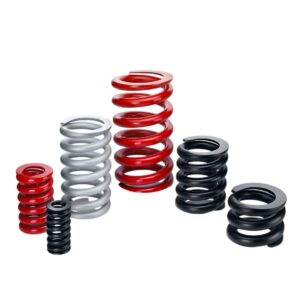
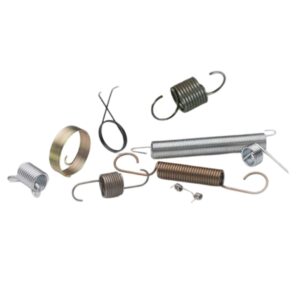
Materials:-
There are many different materials that can be used to design a spring, including:
- Steel: Steel is the most common material used to make springs. It is strong, durable, and has good fatigue resistance.
- Stainless steel: Stainless steel is a type of steel that is resistant to corrosion and is often used in applications where the spring will be exposed to harsh environments.
- Brass: Brass is a soft, malleable metal that is often used to make springs that will be subjected to high loads or that will be used in corrosive environments.
- Copper: Copper is a soft, malleable metal that is often used to make springs for use in electrical applications.
- Bronze: Bronze is a strong, corrosion-resistant metal that is often used in springs for marine and other outdoor applications.
- Aluminum: Aluminum is a lightweight metal that is often used in springs for applications where weight is a concern.
- Carbon: Carbon-based materials, such as carbon steel or carbon composites, can be used to make springs that have increased fatigue resistance and the ability to operate at high temperatures.
Production:-
There are several different methods that can be used to manufacture springs, including:
- Coiling: Coiling is a common method of producing springs. It involves using a machine to wind wire into a spiral shape.
- Stamping: Stamping is a process in which a spring is cut and shaped from a flat sheet of metal using a die and press.
- Wire forming: Wire forming is a process in which a wire is shaped into a spring using a variety of tools and machines.
- Extrusion: Extrusion is a process in which a spring is formed by pushing a material through a shaped die.
- Forging: Forging is a process in which a spring is shaped by hammering or pressing it into a desired shape.


Materials:-
There are many different materials that can be used to design a spring, including:
- Steel: Steel is the most common material used to make springs. It is strong, durable, and has good fatigue resistance.
- Stainless steel: Stainless steel is a type of steel that is resistant to corrosion and is often used in applications where the spring will be exposed to harsh environments.
- Brass: Brass is a soft, malleable metal that is often used to make springs that will be subjected to high loads or that will be used in corrosive environments.
- Copper: Copper is a soft, malleable metal that is often used to make springs for use in electrical applications.
- Bronze: Bronze is a strong, corrosion-resistant metal that is often used in springs for marine and other outdoor applications.
- Aluminum: Aluminum is a lightweight metal that is often used in springs for applications where weight is a concern.
- Carbon: Carbon-based materials, such as carbon steel or carbon composites, can be used to make springs that have increased fatigue resistance and the ability to operate at high temperatures.
Production:-
There are several different methods that can be used to manufacture springs, including:
- Coiling: Coiling is a common method of producing springs. It involves using a machine to wind wire into a spiral shape.
- Stamping: Stamping is a process in which a spring is cut and shaped from a flat sheet of metal using a die and press.
- Wire forming: Wire forming is a process in which a wire is shaped into a spring using a variety of tools and machines.
- Extrusion: Extrusion is a process in which a spring is formed by pushing a material through a shaped die.
- Forging: Forging is a process in which a spring is shaped by hammering or pressing it into a desired shape.
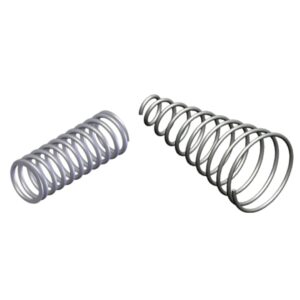

Materials:-
There are many different materials that can be used to design a spring, including:
- Steel: Steel is the most common material used to make springs. It is strong, durable, and has good fatigue resistance.
- Stainless steel: Stainless steel is a type of steel that is resistant to corrosion and is often used in applications where the spring will be exposed to harsh environments.
- Brass: Brass is a soft, malleable metal that is often used to make springs that will be subjected to high loads or that will be used in corrosive environments.
- Copper: Copper is a soft, malleable metal that is often used to make springs for use in electrical applications.
- Bronze: Bronze is a strong, corrosion-resistant metal that is often used in springs for marine and other outdoor applications.
- Aluminum: Aluminum is a lightweight metal that is often used in springs for applications where weight is a concern.
- Carbon: Carbon-based materials, such as carbon steel or carbon composites, can be used to make springs that have increased fatigue resistance and the ability to operate at high temperatures.
Production:-
There are several different methods that can be used to manufacture springs, including:
- Coiling: Coiling is a common method of producing springs. It involves using a machine to wind wire into a spiral shape.
- Stamping: Stamping is a process in which a spring is cut and shaped from a flat sheet of metal using a die and press.
- Wire forming: Wire forming is a process in which a wire is shaped into a spring using a variety of tools and machines.
- Extrusion: Extrusion is a process in which a spring is formed by pushing a material through a shaped die.
- Forging: Forging is a process in which a spring is shaped by hammering or pressing it into a desired shape.
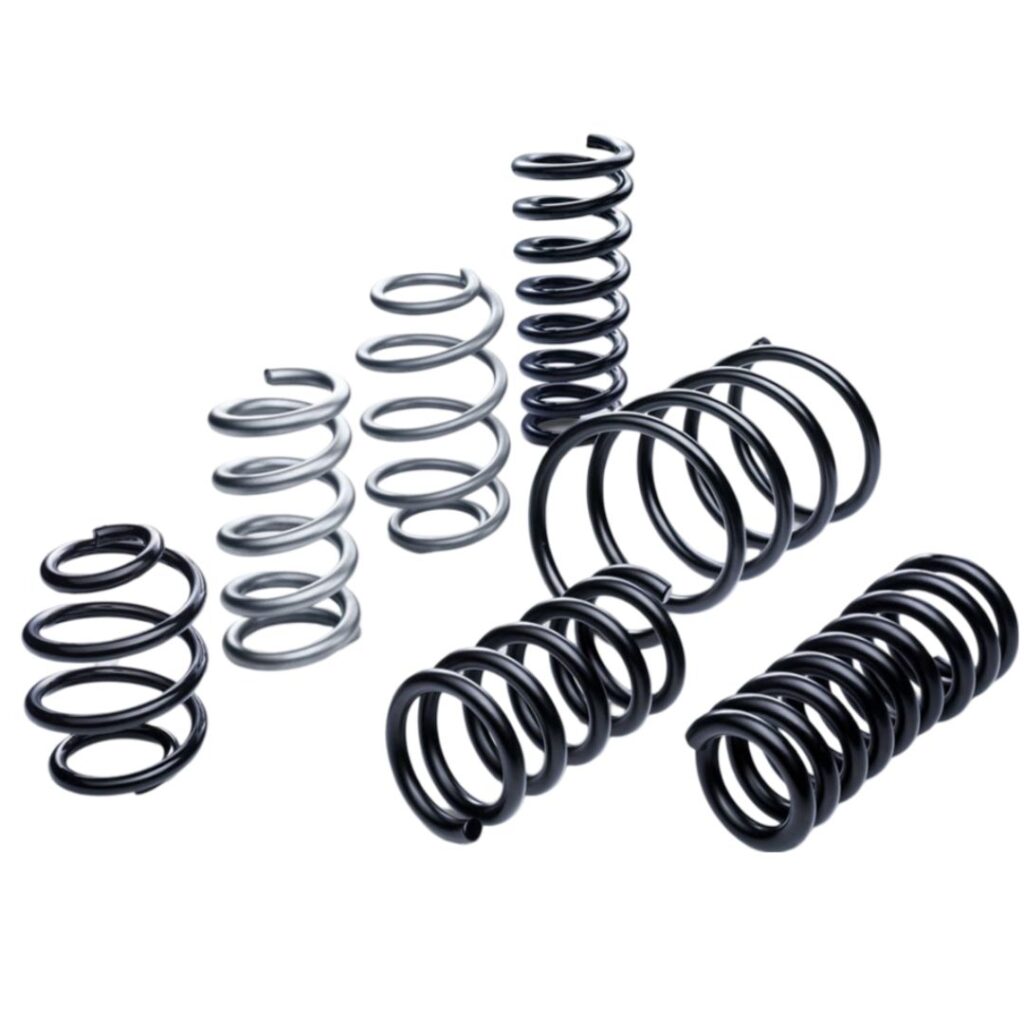



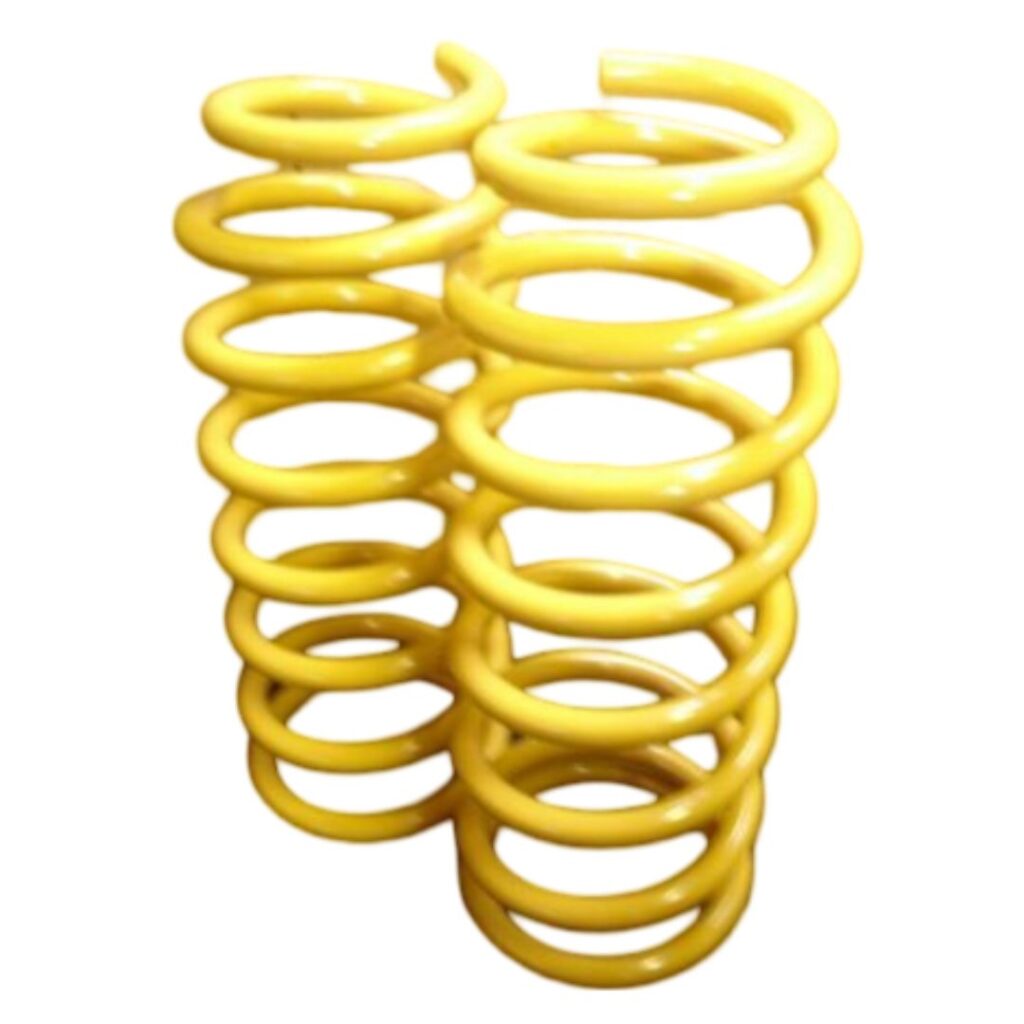

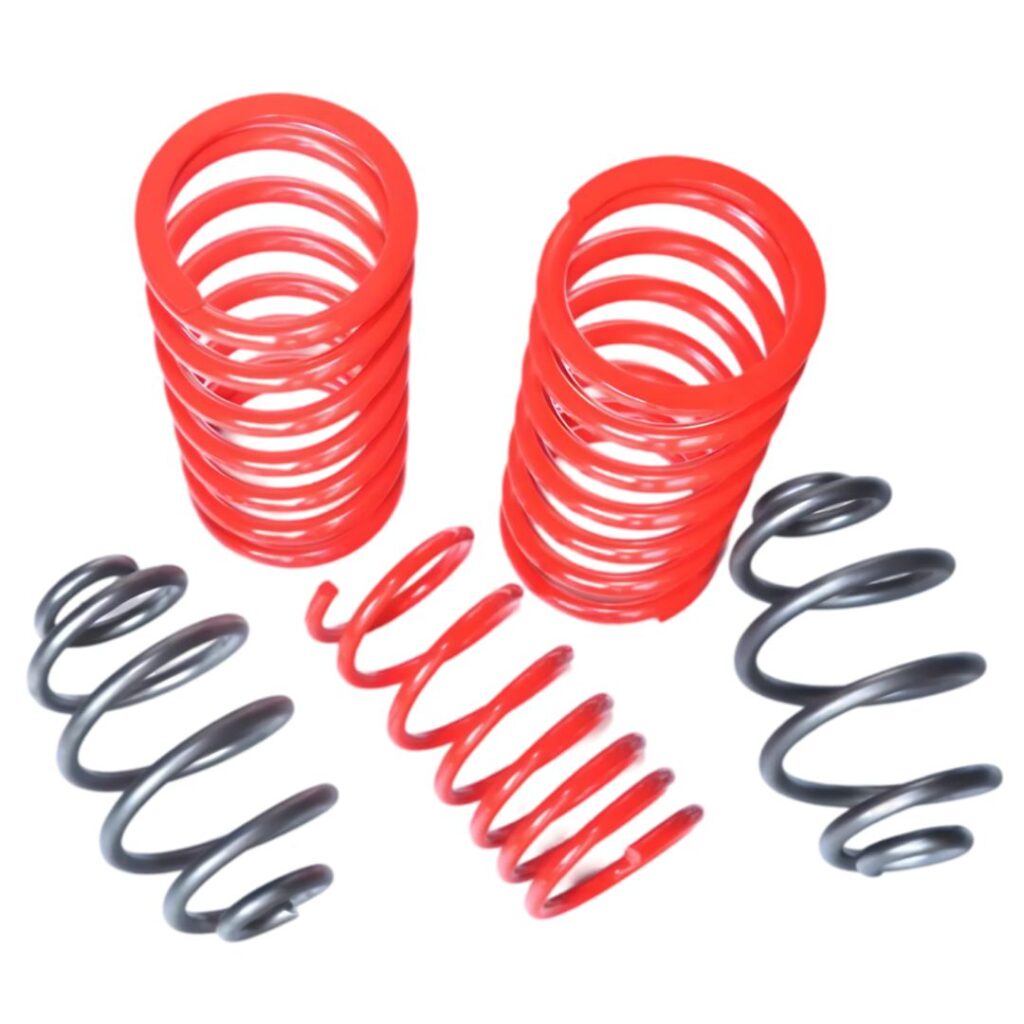


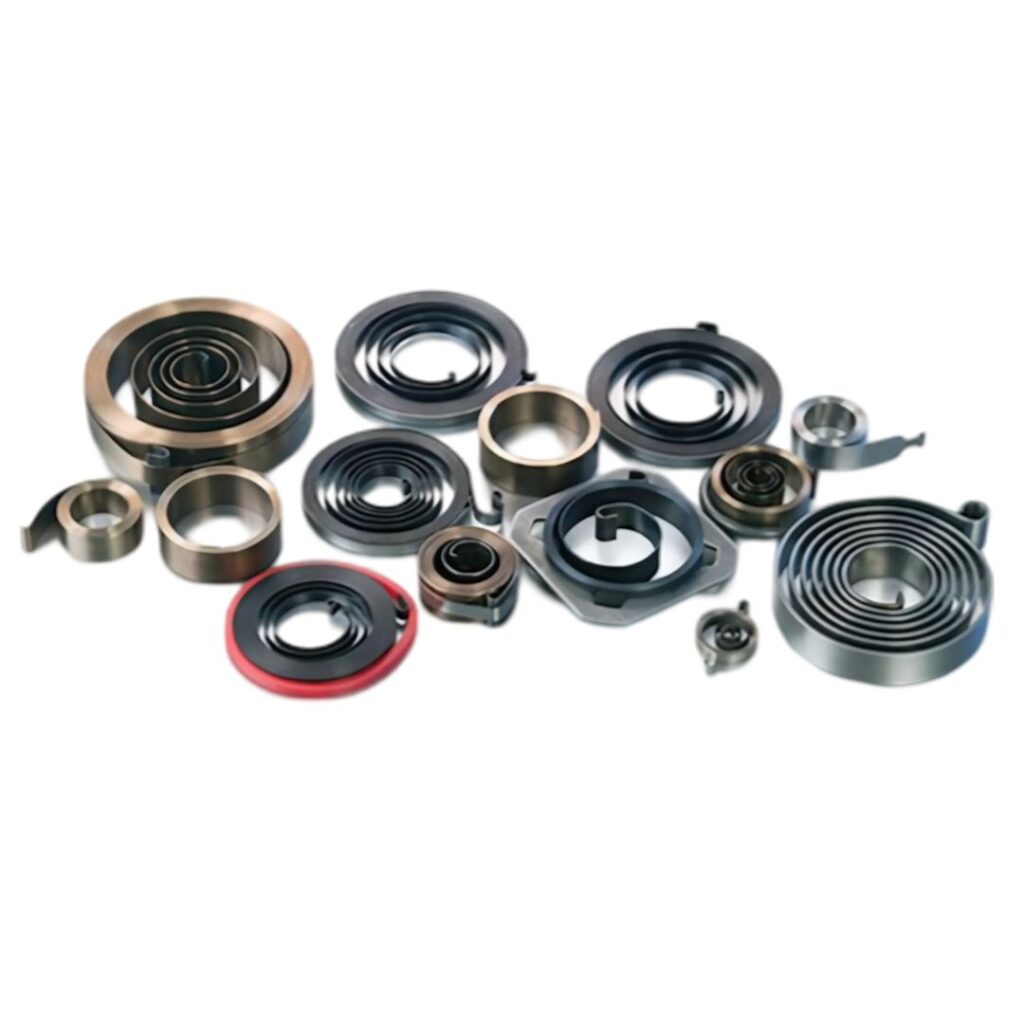
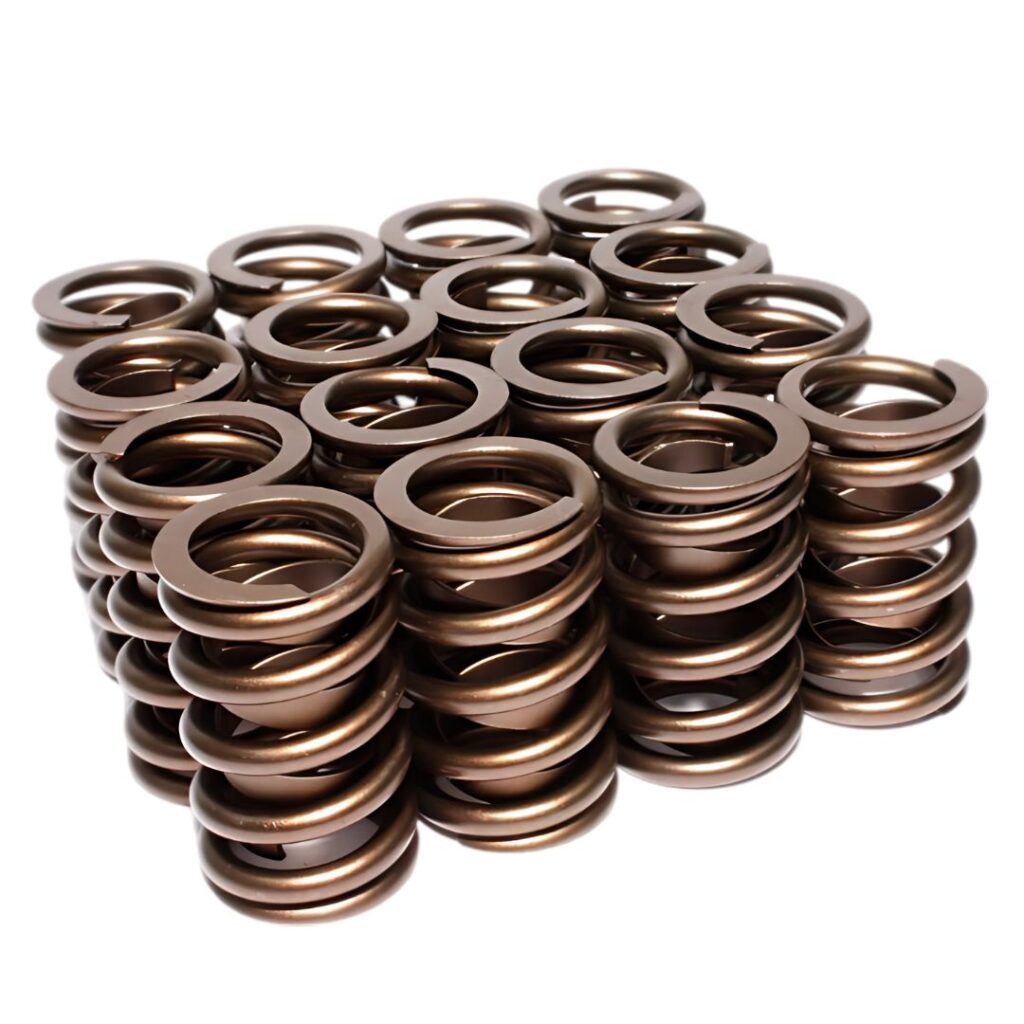
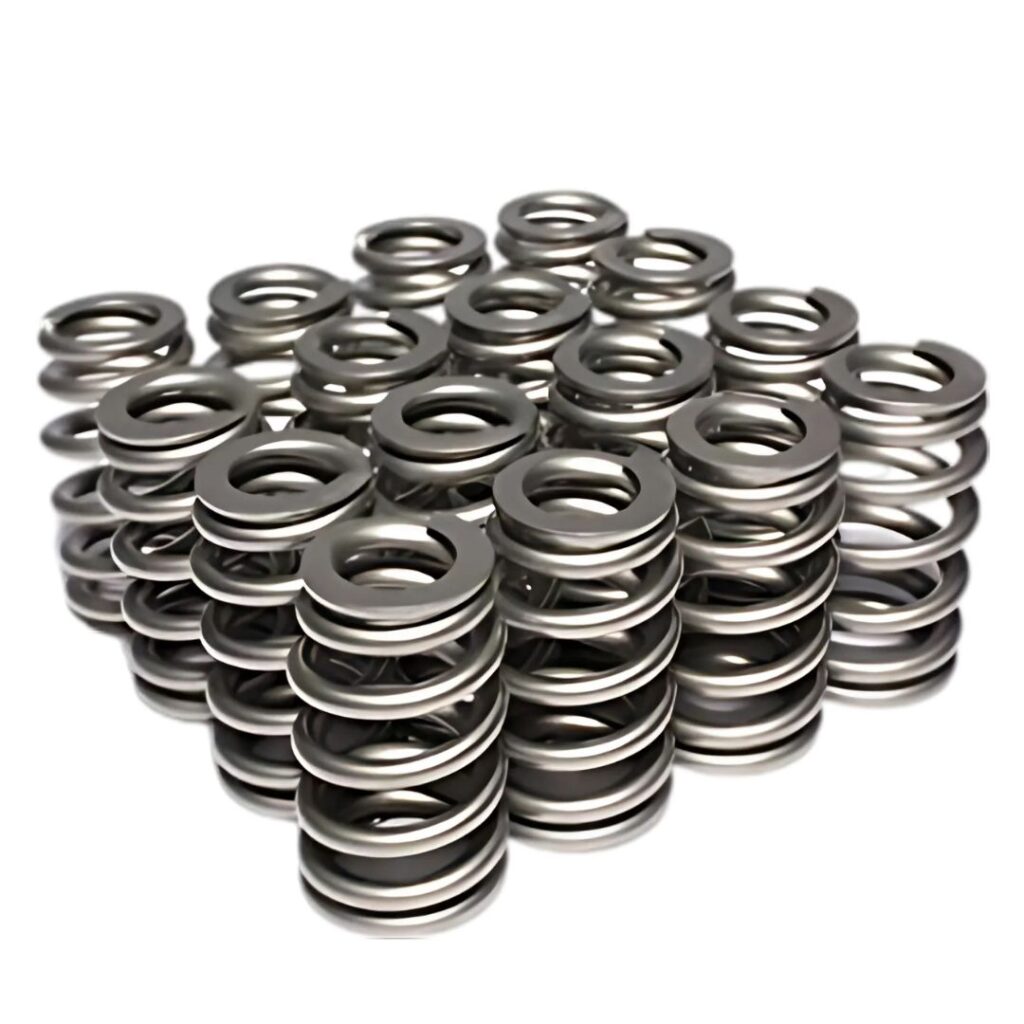

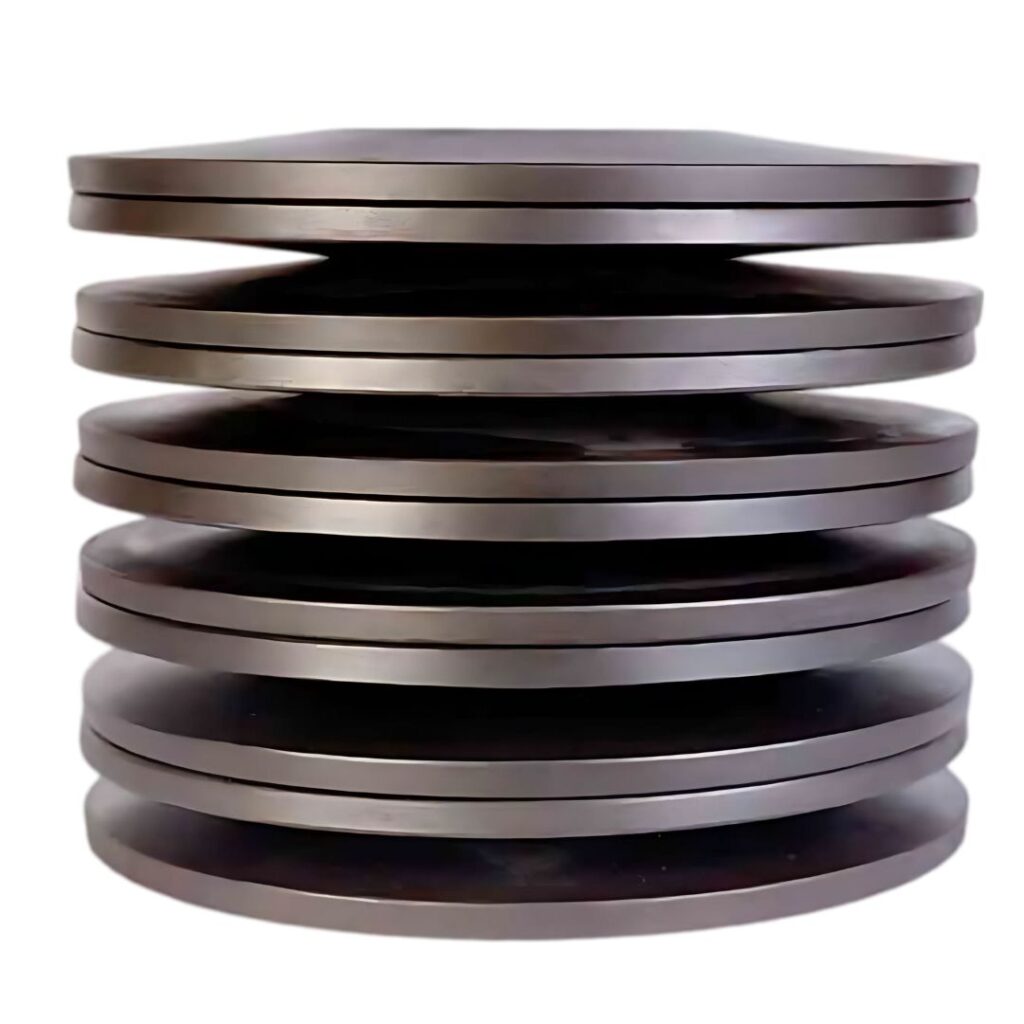
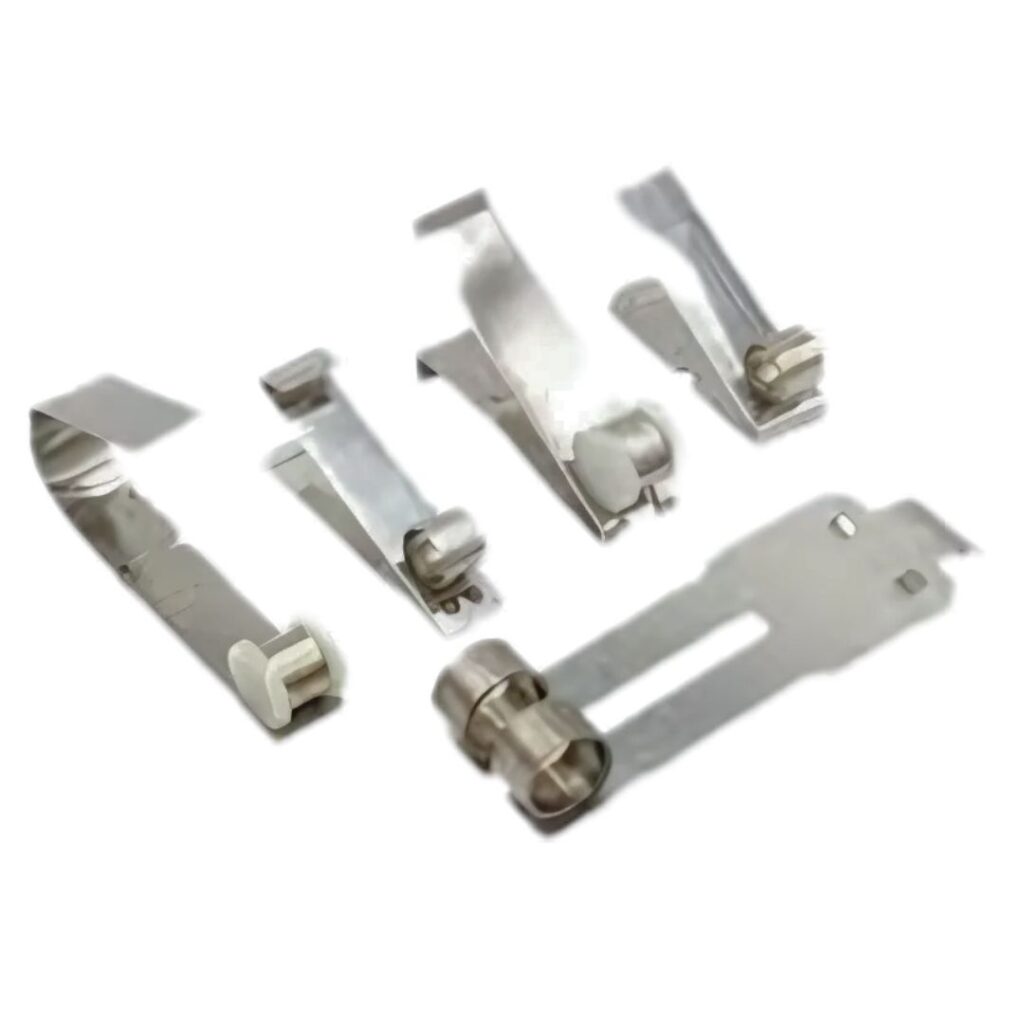
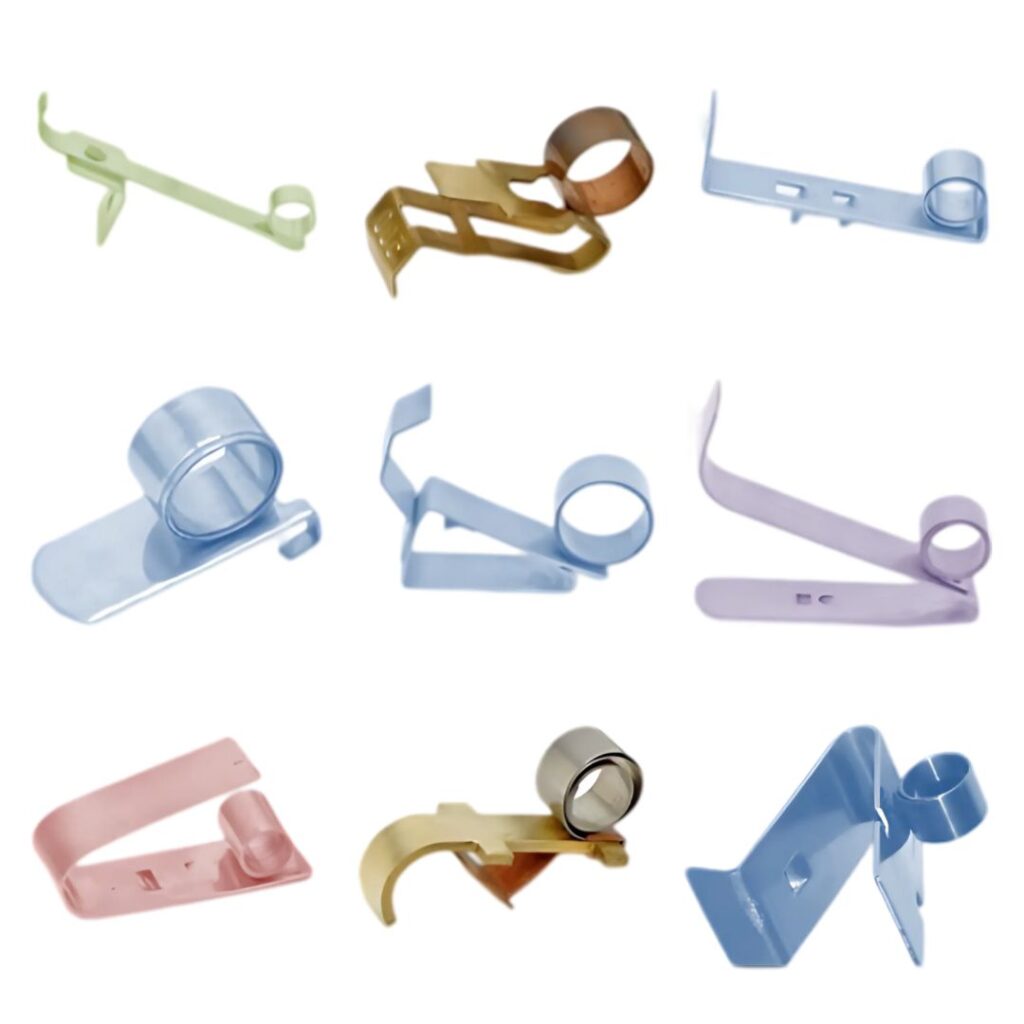
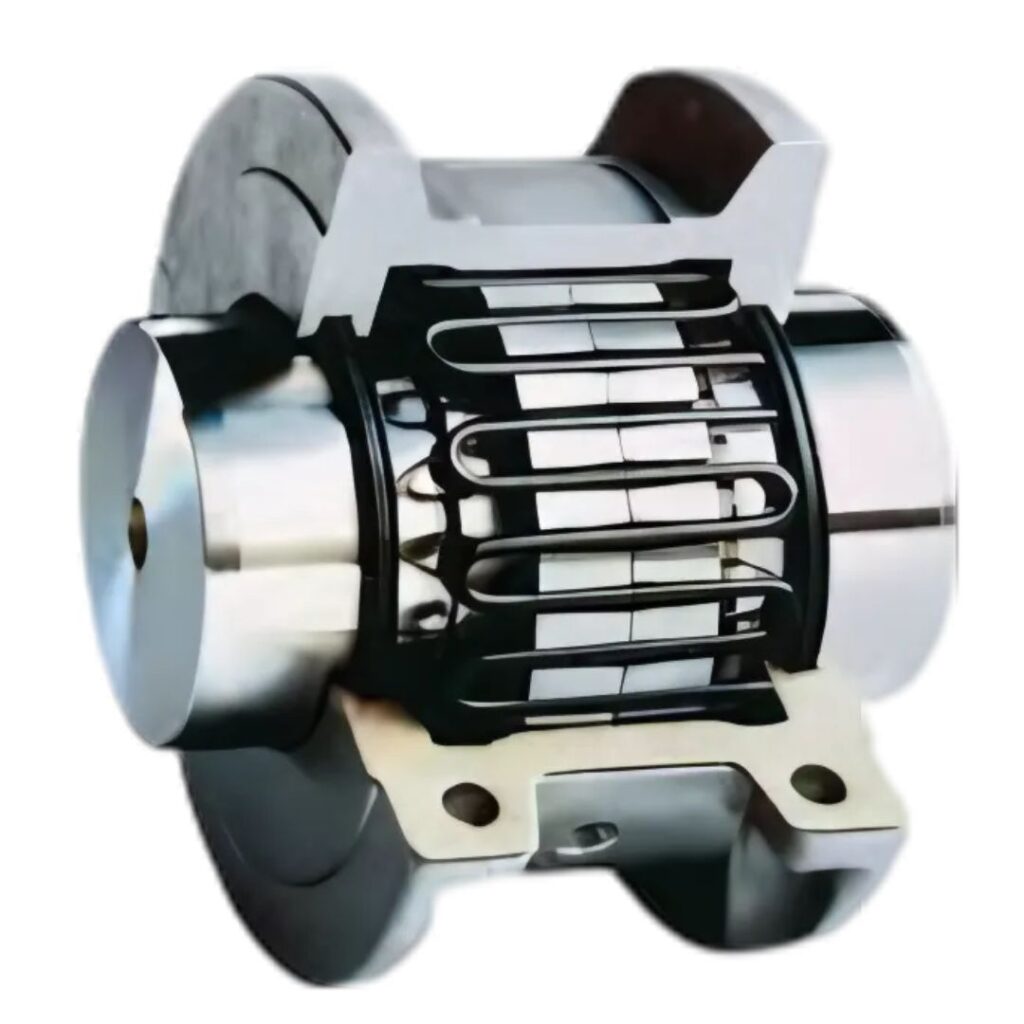
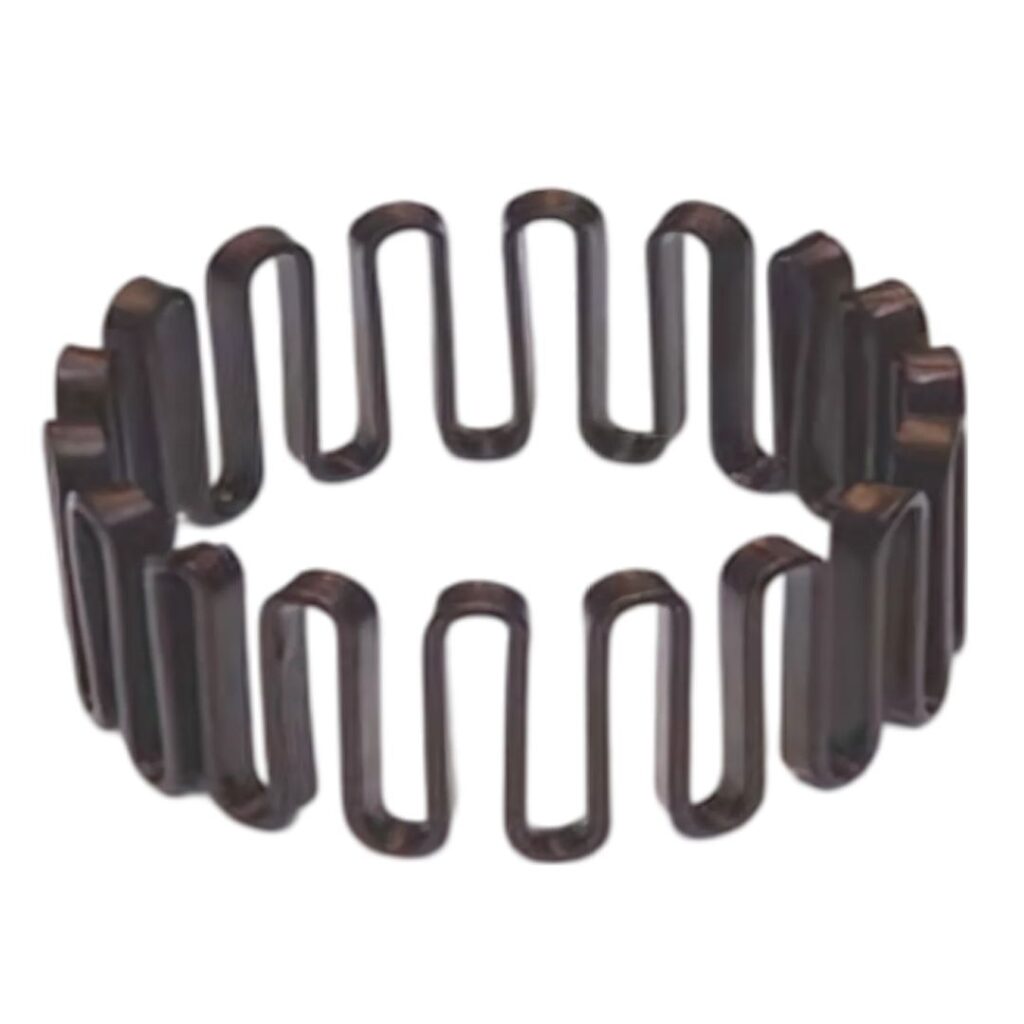

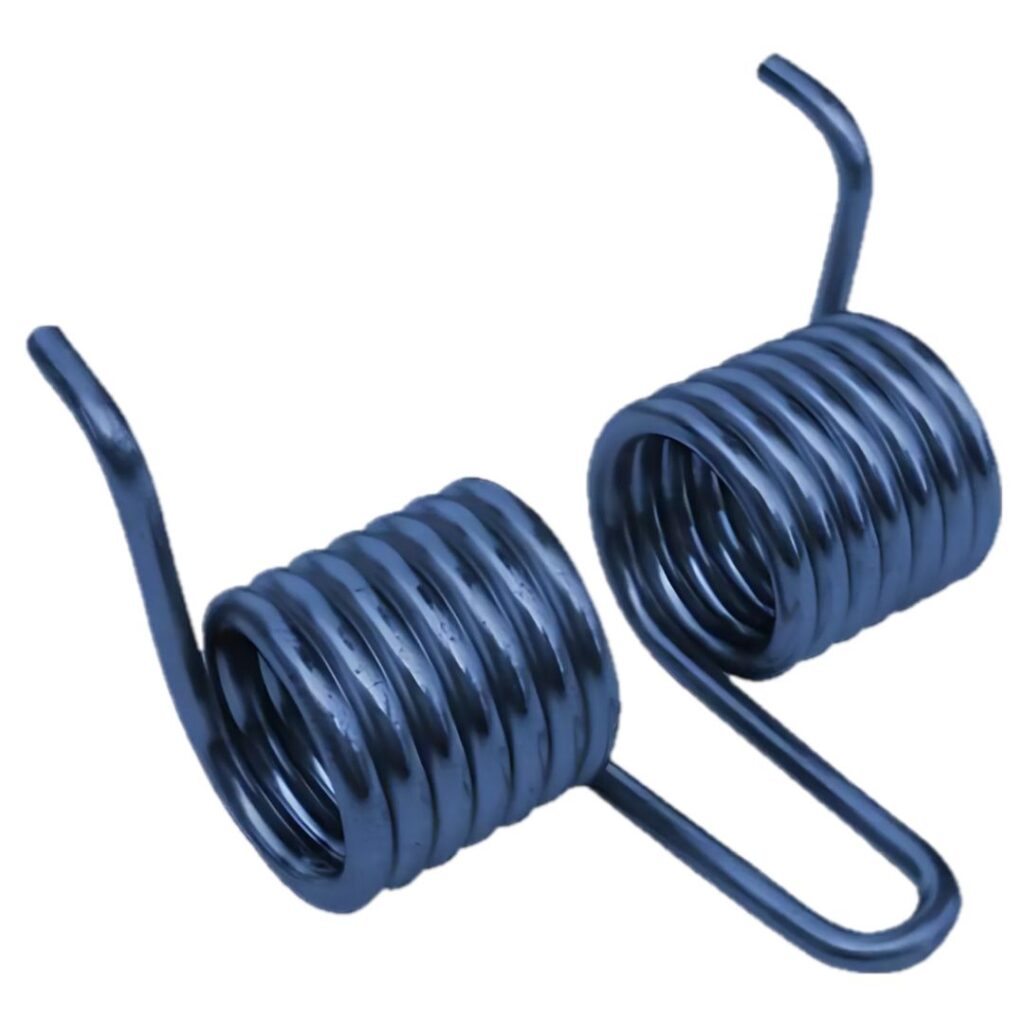
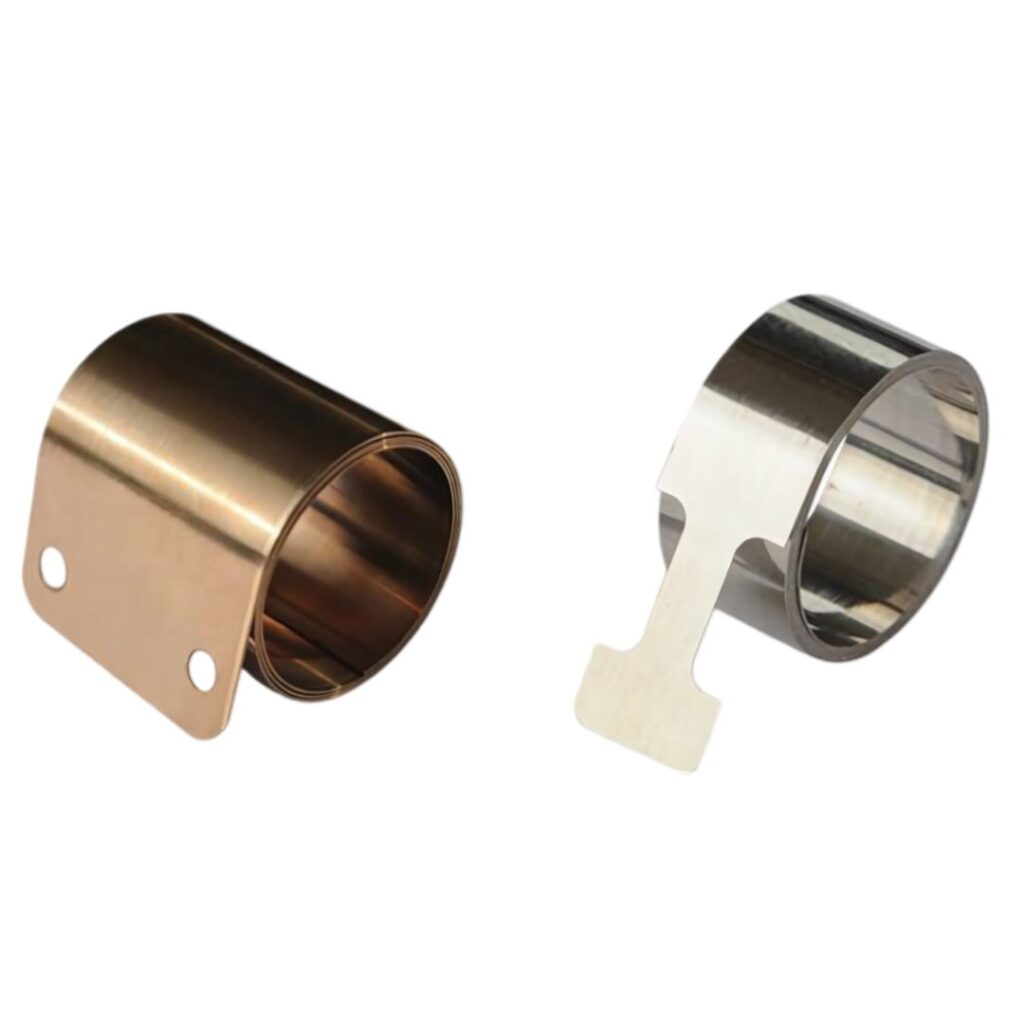
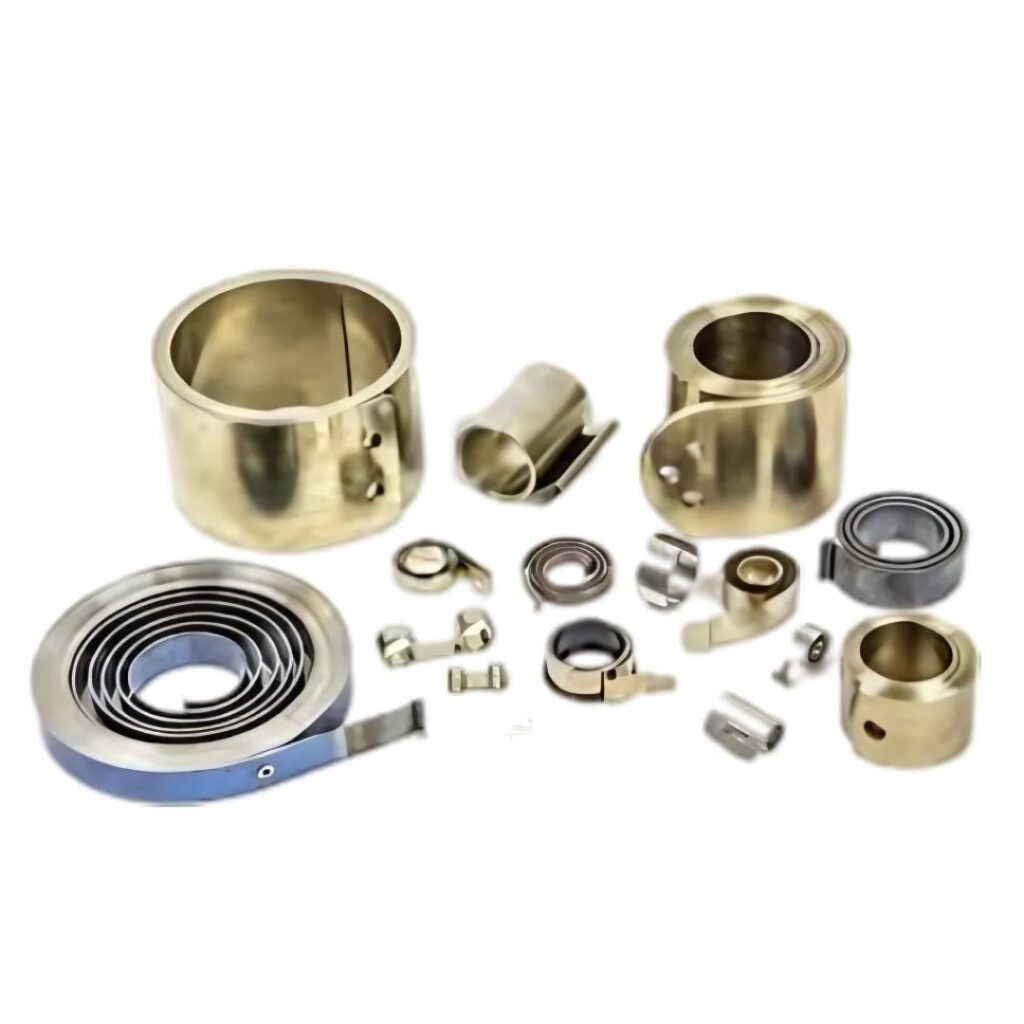

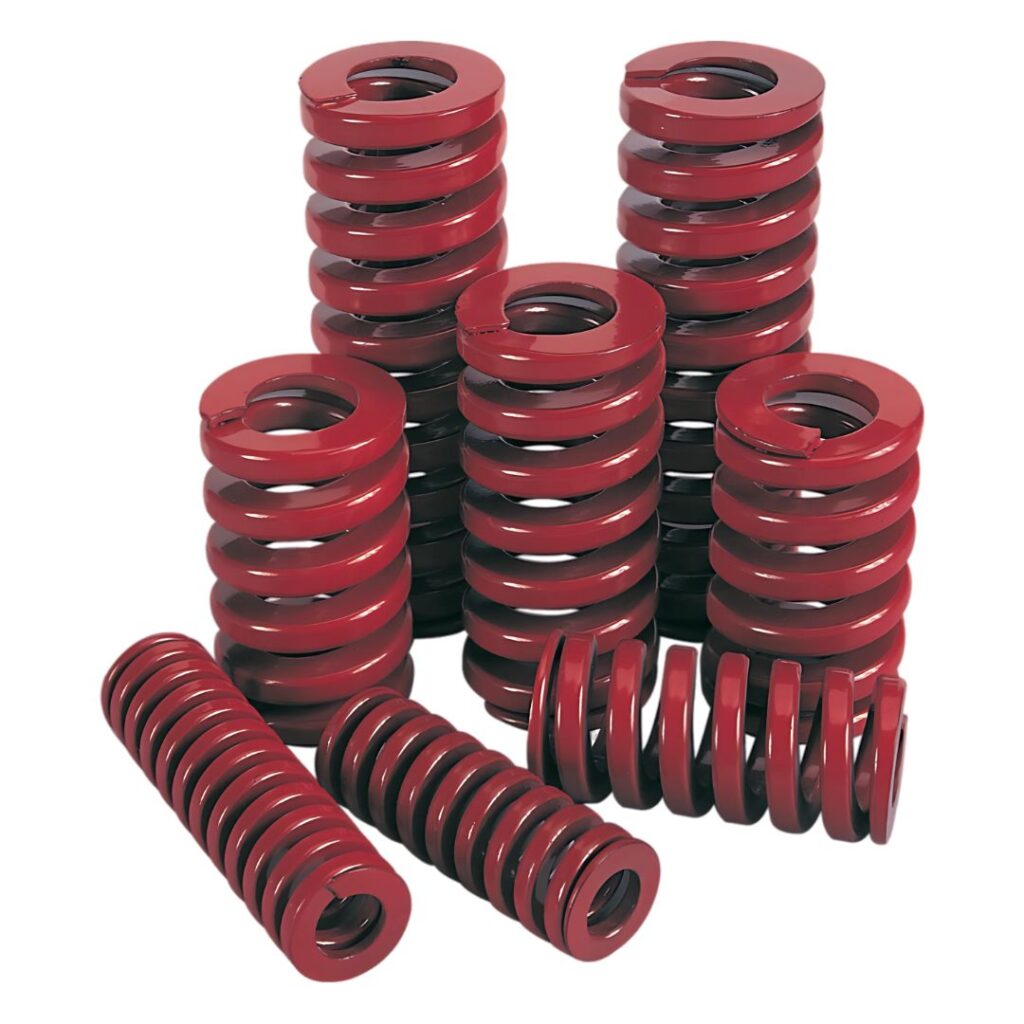
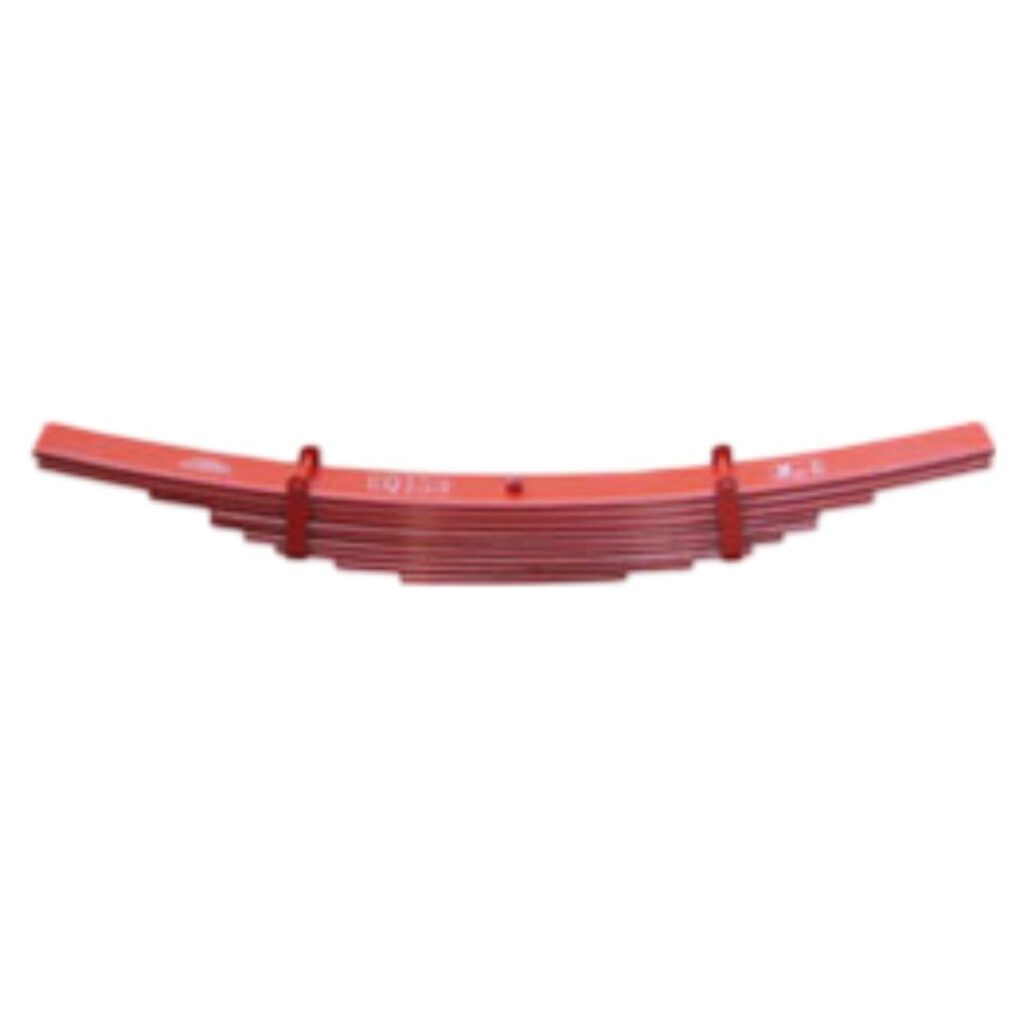
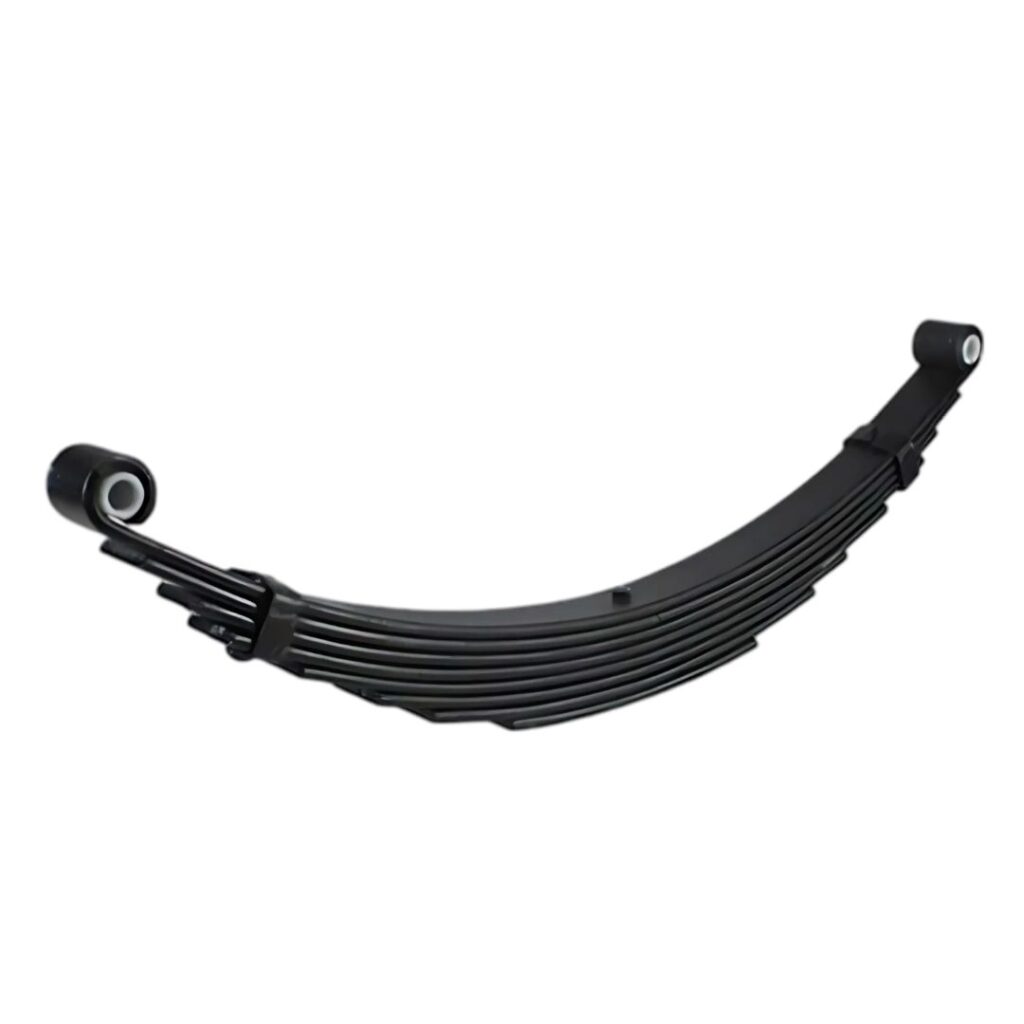
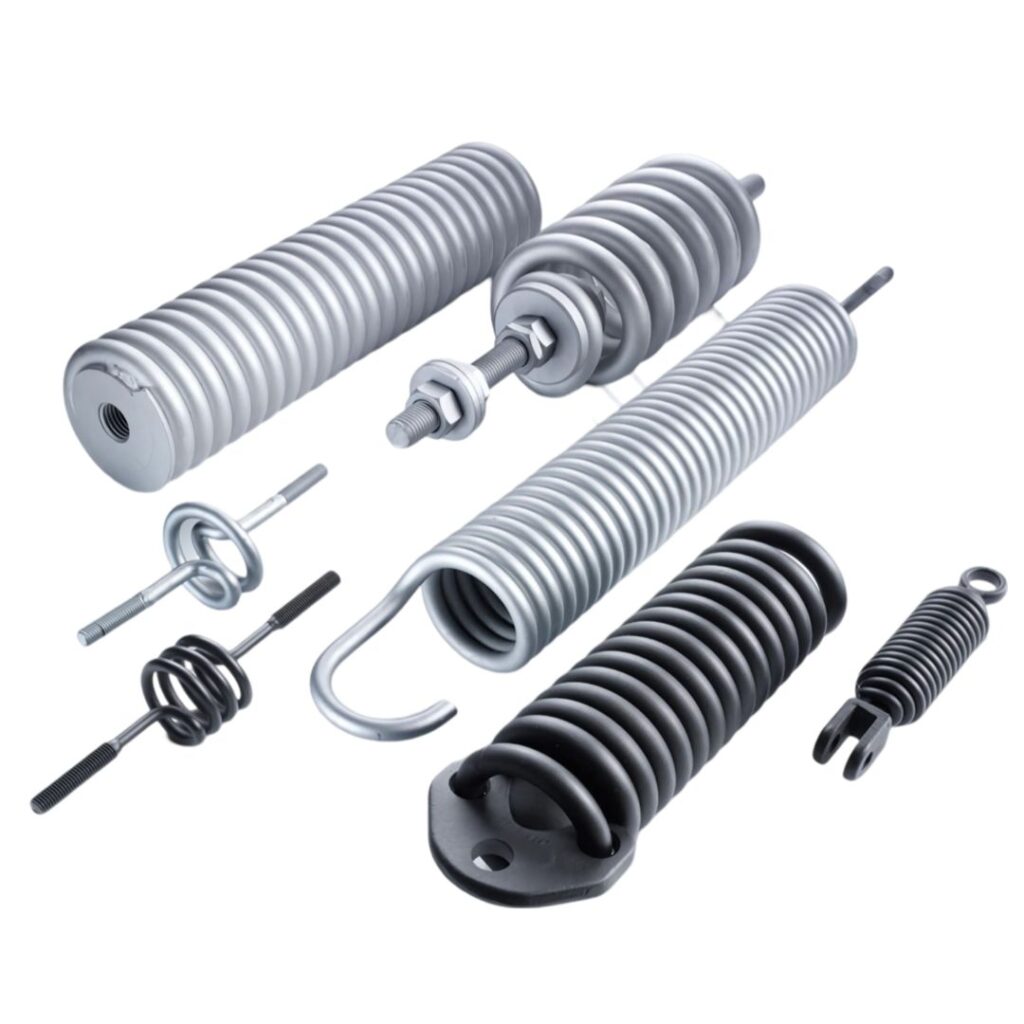

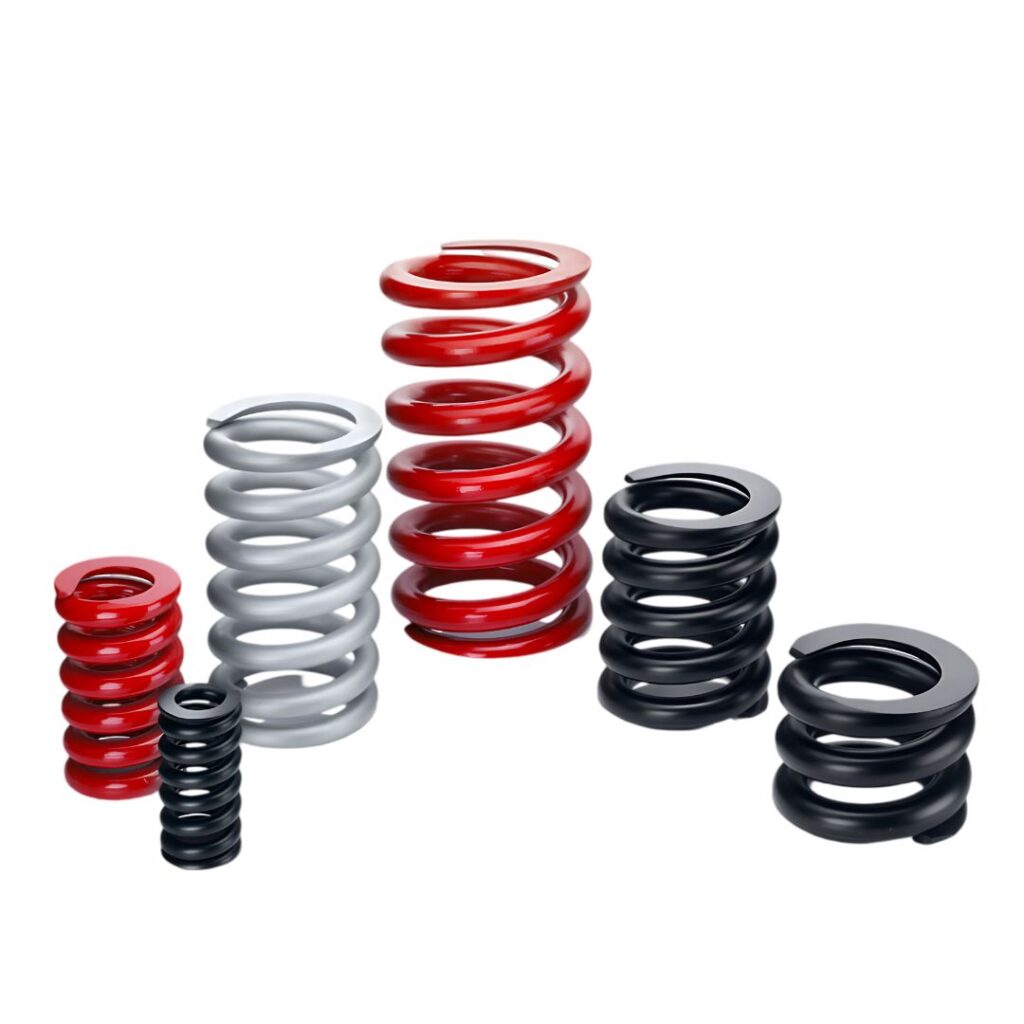


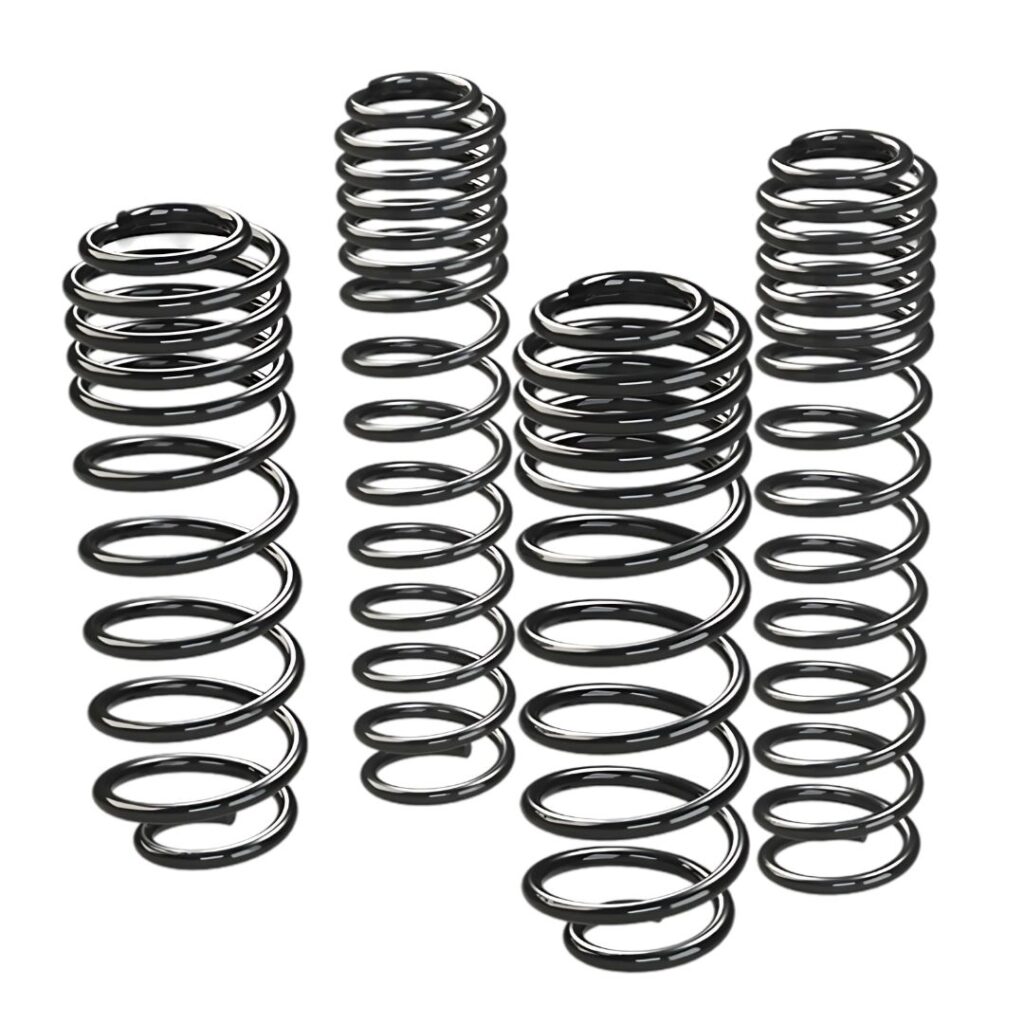
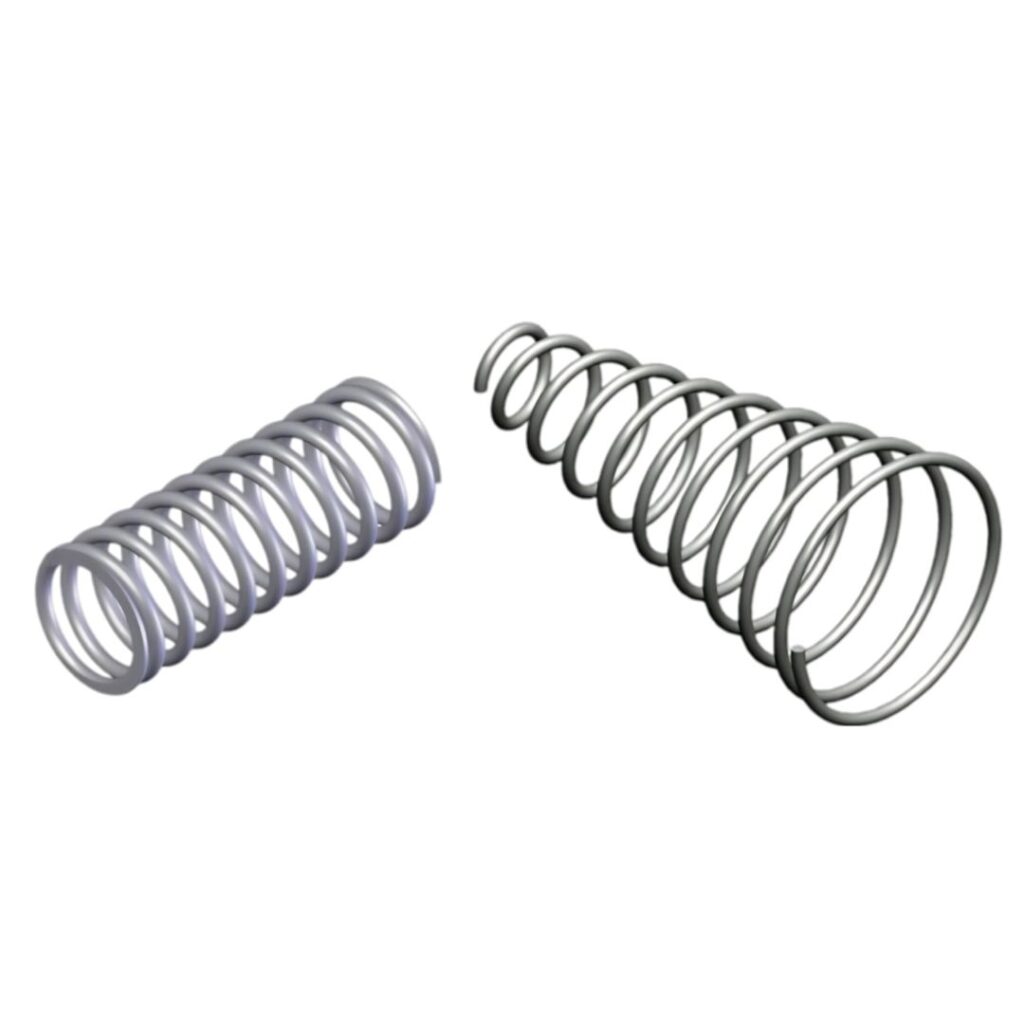
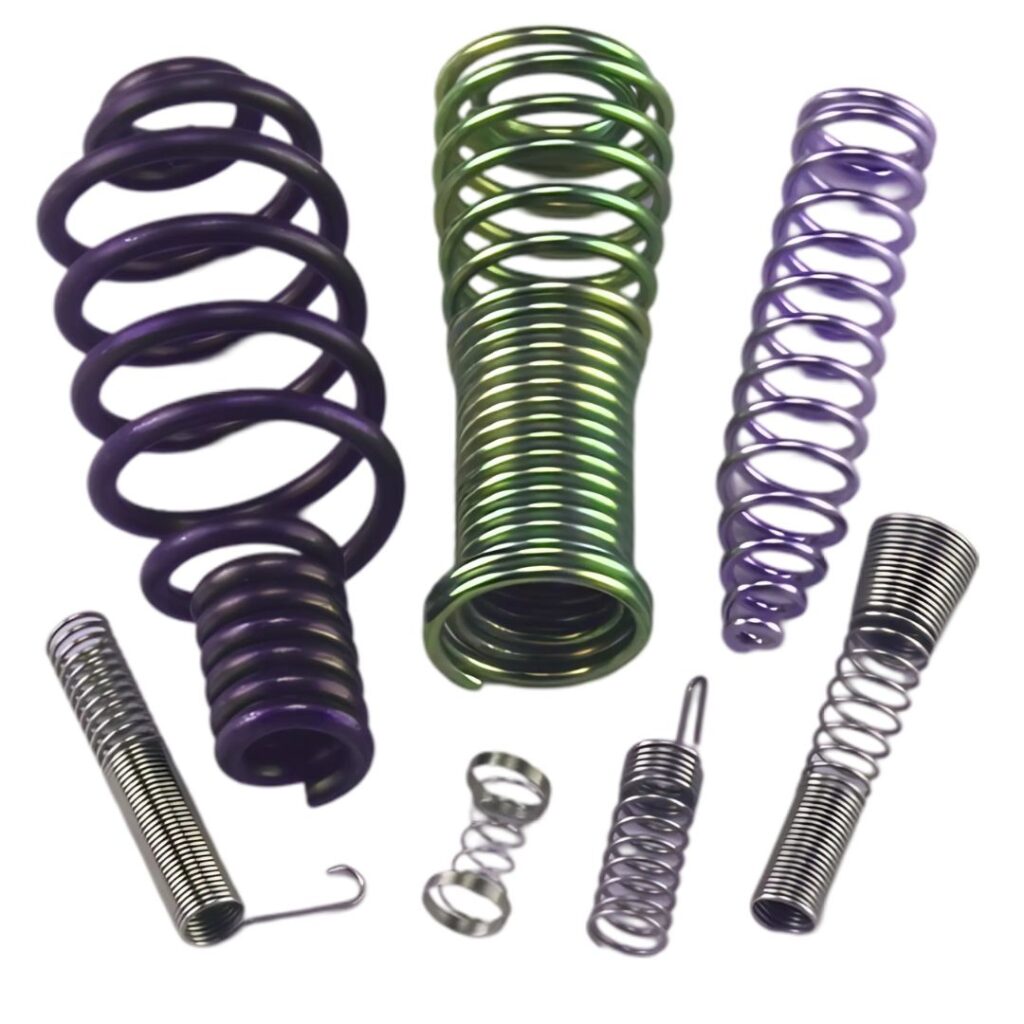
Coil Spring, Compression Spring, Grid Spring Manufacturer & Exporter in India.
We are one of the renowned industrial spring manufacturers in India. We also an ISO 9001:2015 certified Coil Spring, Compression Spring, Grid Spring, Die Spring, Industrial Spring etc. manufacturing as per specification.
CERTIFICATE








